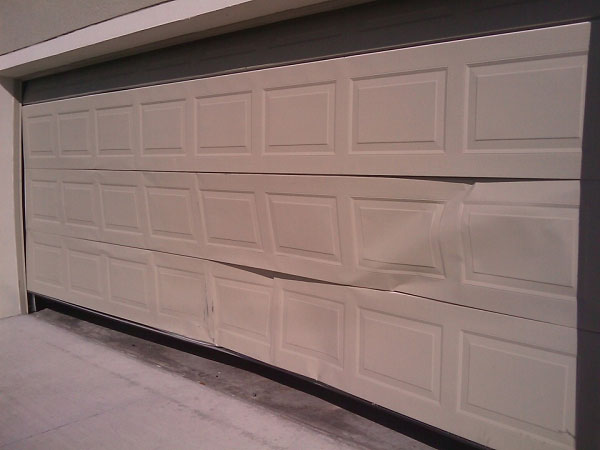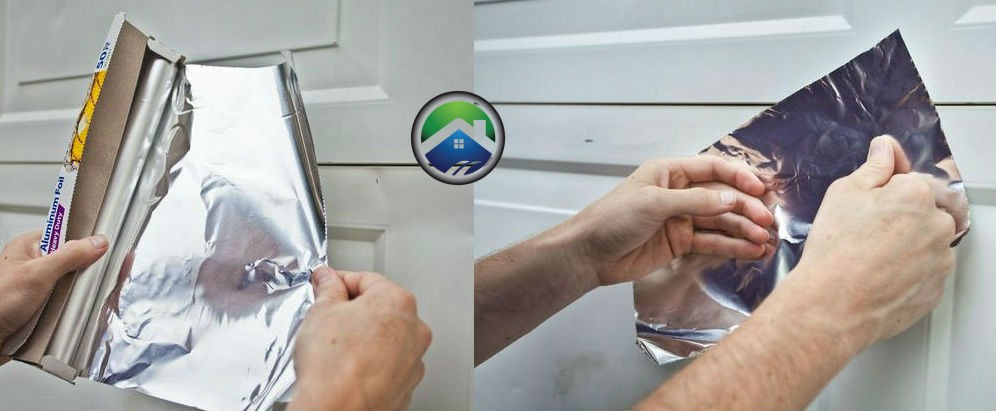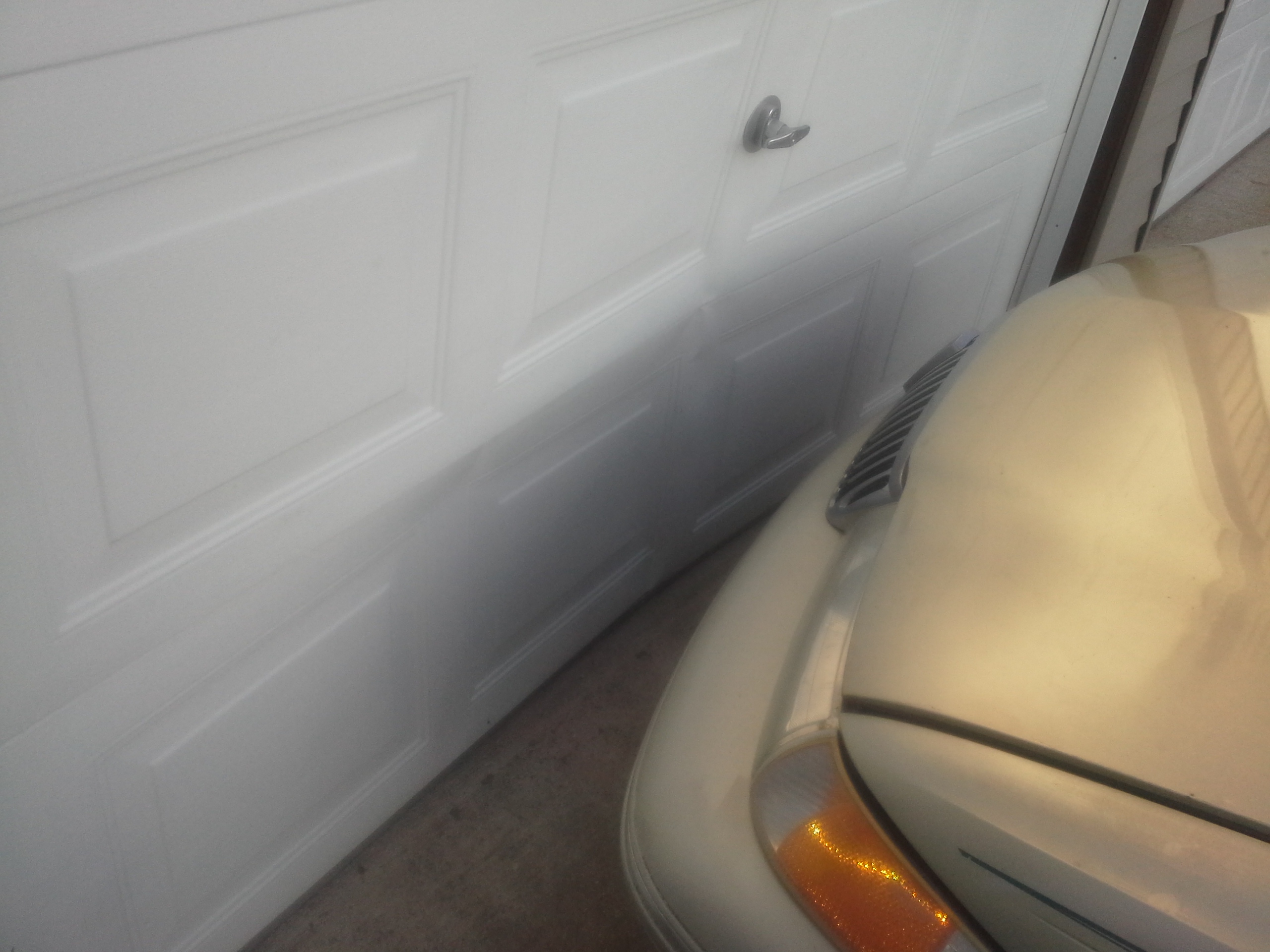Have you ever pulled into your driveway, only to be greeted by the sight of a dented garage door? It’s an unwelcome surprise that can leave you feeling frustrated and uncertain about what to do next.
Your garage door is more than just an entryway for your car—it’s a crucial part of your home’s curb appeal and security. When it’s dented, it not only diminishes the appearance of your house but might also affect its functionality.
But don’t worry; you’re not alone in this. Many homeowners face this issue, and fortunately, there are effective solutions that can restore your garage door to its former glory. Imagine the satisfaction of seeing your garage door looking pristine and functioning perfectly again, without the need for expensive replacements. You’ll discover simple, practical steps to fix a dented garage door, making it look as good as new. Whether you’re a DIY enthusiast or someone who prefers quick fixes, there’s a method here for you. Keep reading to learn how you can tackle this problem head-on and regain the aesthetic appeal and security of your home.

Credit: www.jbgaragedoorrepair.com
Assessing The Damage
Before fixing a dented garage door, assess the damage first. This helps in choosing the right repair method. A proper assessment ensures effective repair. Let’s delve into how to assess the damage properly.
Identifying The Type Of Dent
Begin by identifying the dent type. Look for scratches or deep indentations. Some dents are surface-level. Others might affect the door’s structure. Knowing the type helps in planning the repair approach.
Evaluating Severity
Next, evaluate the dent’s severity. Examine if the dent affects the door’s function. Minor dents might not hinder the door’s operation. Severe dents could cause alignment problems. Check if the dent compromises the door’s security. Understanding severity helps decide if professional help is needed.
Gathering Necessary Tools
Fixing a dented garage door may seem daunting. Gathering the right tools simplifies the process. Proper tools ensure you handle repairs efficiently. This section provides guidance on essential items for your repair toolkit. Equipped with these tools, you’ll be ready to tackle any dent.
Basic Repair Tools
Start with a rubber mallet. It helps reshape metal panels without damage. A block of wood is useful. It absorbs the force from the mallet. Get a pair of pliers. They assist in gripping and bending metal. A tape measure is crucial. It ensures precision in alignment. Don’t forget a level. It guarantees the door is even after repair.
Safety Equipment
Safety is paramount during repairs. Wear safety goggles. They protect your eyes from flying debris. Use gloves to shield your hands from sharp edges. A hard hat is advisable. It guards your head from accidental hits. Consider knee pads. They provide comfort when kneeling. Ensure you have a sturdy step ladder. It offers stable access to higher panels.
Repairing Small Dents
Fixing a dented garage door is easy with the right tools. Start by cleaning the area, then use a rubber mallet to gently tap the dent. Apply heat with a hairdryer to make the metal expand and return to its original shape.
Repairing small dents in your garage door doesn’t have to be a daunting task. With a few tools and techniques, you can restore your door to its original look without calling in a professional. Whether it’s a minor mishap from a stray basketball or a subtle bump from your car, tackling these small dents can save you money and give you a sense of accomplishment. Let’s dive into some practical methods that you can easily apply.Using A Mallet
The mallet method is straightforward and can be surprisingly effective for minor dents. You’ll need a rubber mallet, which is gentle enough to not cause further damage to the door’s surface. First, ensure the area around the dent is clean. Dirt can interfere with the repair process. Place a wooden block on the inside of the door, directly behind the dent. This helps distribute the force evenly and prevents the dent from popping out unevenly. Using the rubber mallet, gently tap around the dent’s perimeter. Work your way towards the center. This technique can gradually flatten out the surface. Have you ever considered how the right tools make all the difference? Using a rubber mallet instead of a metal hammer can avoid paint chipping.Applying Heat
Heat application is another effective method for small dents, especially if they are shallow. You’ll need a hairdryer and a can of compressed air. Start by cleaning the dented area. Dust or grime can affect the adhesion of the paint or finish. Aim the hairdryer at the dent, maintaining a distance of about six inches. The goal is to heat the metal but not to burn the paint. After about 30 seconds, quickly switch to the compressed air. Hold the can upside down and spray the dent. The rapid cooling causes the metal to contract and can pop the dent back into place. Have you noticed how temperature changes can alter materials? This method uses science to your advantage, making you wonder what other household fixes await discovery. Repairing small dents in your garage door can be a rewarding DIY project. With a mallet or a bit of heat, you have tools to tackle these blemishes head-on.
Credit: elitetechgarage.com
Fixing Large Dents
Fixing large dents in a garage door demands careful attention. These dents can affect the door’s operation and appearance. Addressing them promptly ensures the door works smoothly and looks good. This guide covers two effective methods for repairing large dents.
Patching Techniques
Patching large dents involves using specific materials. Start by cleaning the dented area with soapy water. Rinse and dry it thoroughly. Apply a layer of auto body filler with a putty knife. Spread it evenly over the dent. Let it dry completely. Sand the area until it’s smooth. Paint over the patch to match the rest of the door. This technique restores the door’s appearance effectively.
Replacing Panels
Sometimes, dents are too large for patching. In such cases, panel replacement is ideal. First, measure the damaged panel. Purchase a replacement from the manufacturer. Remove the damaged panel using a wrench. Detach it from the door frame. Install the new panel carefully. Ensure it aligns properly with the other panels. Test the door for smooth operation. Panel replacement offers a permanent fix for large dents.
Painting And Finishing
Dealing with a dented garage door involves a few simple steps. First, gather essential tools like a rubber mallet and aluminum foil. Then, gently hammer out the dent and apply heat to reshape the metal. With patience, your garage door can look as good as new.
Painting and finishing a dented garage door can dramatically enhance its appearance. After repairing the dent, it’s essential to apply a fresh coat of paint to ensure it blends seamlessly with the rest of the door. This step not only improves aesthetics but also provides protection against the elements. Whether you’re a seasoned DIY enthusiast or a beginner, following a few straightforward steps can make this task manageable and even enjoyable.Choosing Paint
Selecting the right paint is crucial. Opt for exterior-grade paint that is designed to withstand weather changes. Consider the color of the rest of your garage door for a cohesive look. You might want to match it perfectly or choose a complementary color for a fresh update. Before making a purchase, check the paint’s durability and drying time. A quick-drying paint can save you from long waiting periods. When I first painted my garage door, I chose a fast-drying, weather-resistant paint, which made the job much easier.Applying Paint
Preparation is key when applying paint. Begin by cleaning the area thoroughly to remove dust and debris. Use a fine-grit sandpaper to smooth out the repaired area, ensuring the paint adheres well. Use a quality brush or roller for even application. Apply the paint in thin layers, allowing each coat to dry completely before adding another. This prevents drips and ensures a smooth finish. When I painted my door, I found that working in the early morning when the sun wasn’t too harsh helped the paint dry evenly. After applying the final coat, give the door time to cure. This allows the paint to settle and provides a durable finish. Have you ever thought about how a simple change in color can transform the look of your entire home exterior?
Credit: www.sacsgarage.com
Preventing Future Damage
Garage doors are essential parts of our homes, yet often overlooked until they need fixing. Preventing future damage to your garage door not only saves time but also money. Let’s explore some straightforward strategies to keep your garage door dent-free and operating smoothly.
Regular Maintenance Tips
Regular maintenance is key to a healthy garage door. Cleaning the door surface periodically prevents dirt accumulation, which can lead to rust and deterioration. Consider using mild soap and water for this task.
Lubricate moving parts like hinges and rollers every few months. This reduces friction and wear, keeping the door operating smoothly. A silicone-based lubricant is often recommended for its effectiveness.
Inspect your garage door’s balance and alignment regularly. An unbalanced door can lead to uneven stress, causing dents over time. You can test balance by disconnecting the opener and manually lifting the door. It should stay open without sliding down.
Protective Measures
Installing protective padding on the inside of your garage door can help absorb impact from accidental bumps. This simple addition can significantly reduce the risk of dents.
Consider upgrading to a door made of durable materials like steel or fiberglass. These materials offer better resistance to impact, safeguarding your door against common causes of dents.
Think about rearranging your garage layout to minimize the risk of objects hitting the door. Position items like bikes or heavy tools away from the door path. It’s surprising how a little strategic planning can prevent many accidents.
Have you thought about how seasonal changes affect your garage door? Weatherstripping can protect against harsh elements, preventing rust and warping. It’s a small investment with big returns.
Ask yourself, is your garage door ready for another season? Taking preventive steps today ensures your door remains dent-free tomorrow. Don’t wait for the next dent to decide on maintenance—it’s a choice that pays off in more ways than one.
Frequently Asked Questions
How Can I Identify A Dent In My Garage Door?
Look for visible bends or curves. Check for misalignment or difficulty in opening and closing.
What Tools Do I Need To Fix A Garage Door Dent?
You need a rubber mallet, aluminum foil, heat source, and compressed air. Simple tools for a basic fix.
Can I Fix A Garage Door Dent Myself?
Yes, small dents are often fixable at home. Use basic tools and follow a guide.
How Much Does It Cost To Repair Garage Door Dents?
Costs vary. Small DIY repairs are cheap. Professional repairs may cost more depending on damage.
When Should I Call A Professional For Garage Door Repair?
Call a professional for large dents. Also, if the door doesn’t work properly after a DIY fix.
Conclusion
Fixing a dented garage door doesn’t have to be daunting. With the right tools, you can restore its look. Start by assessing the dent’s size. Small dents? Try using suction cups or heat. Larger dents? Consider a hammer and dolly set.
Remember, patience is key. Work slowly to avoid further damage. Regular maintenance helps prevent future dents. Check for loose parts often. Keep your garage door clean. Dirt can hide damage. A well-maintained door lasts longer. Save money and time with these simple steps.
Your garage door deserves care. Happy fixing!




